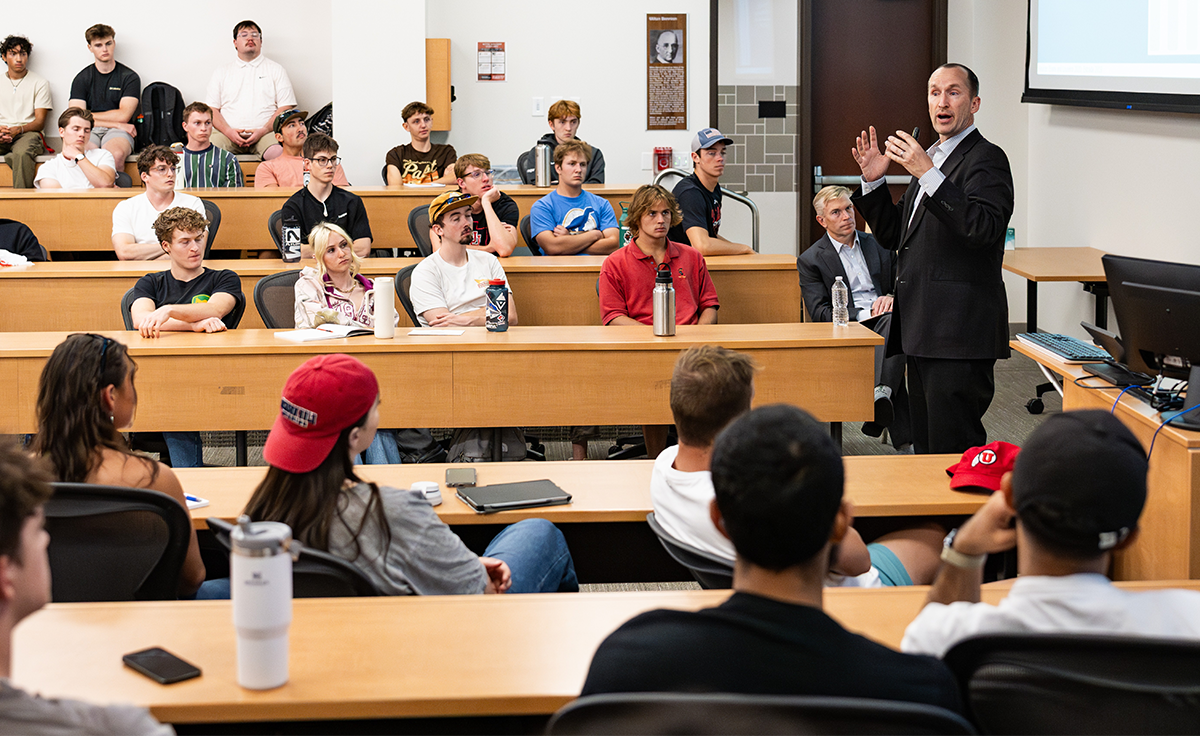Famed American academic Linda Darling-Hammond once noted that, “Teaching is the profession on which all other professions depend.”
That is the basic tenet underlying the work of David Evans, Director of the Global Education and Child Well-Being Program at the Center for Global Development.
Evans recently appeared as a guest lecturer at the David Eccles School of Business’s Marriner S. Eccles Institute for Economics and Quantitative Analysis, where he gave a presentation with a simple premise and complex questions:
“How to Get a Motivated, Qualified Teacher in Front of Every Child Around the World”
He works as a development economist, which means he studies how to reduce poverty and improve economic growth, as well as how to help education and living standards in developing countries.
“We’re trying to understand how we can help kids all over the world to flourish and have opportunity,” he said.
One key to that, Evans added, is dispelling the notion that simply accumulating years in an academic system is, by itself, a difference-maker.
Quantity, it turns out, is not an inherent indicator of quality. There are plenty of national education systems throughout the world that mandate a decade-plus of attendance but which don’t produce high-end academic results.
“All that schooling doesn’t [automatically] equal learning,” Evans said.
By way of example, he pointed out that South African kids are in school for about 11 years — but are only learning about as much as kids from Singapore learn in six years.
There is one tried-and-true correlation that drives his work, though: “Countries where kids perform better on tests have strong economic growth.”
So what can countries that don’t have high-performing education systems do to generate those high scores?
The problem at its most fundamental level, he explained, is that such nations typically have a severe shortage of quality educators.
In some countries, teachers are abundant, but there is no quality control, and absenteeism or low effort are commonplace. In other places, well-meaning but low-performing teachers are sometimes dismissed en masse, but without a robust infrastructure in place to provide replacements.
According to his research, by 2030, countries need to recruit annually, on average, the equivalent of 11% of their current workforce to meet teaching demand at the primary level. By 2040, this figure goes up to 14%.
How do we go about getting better teachers and helping existing teachers to be better? Evans listed what he referred to as “The 5 Principles”:
- Make teaching attractive.
- Improve pre-service education.
- Promote meritocratic selection.
- Provide high-quality professional development and school leadership.
- Allocate and manage the workforce effectively.
For example: Job attractiveness is not automatically tied to higher pay; in Finland’s highly rated system, for instance, teaching is not particularly lucrative, but it is perceived as prestigious and thus draws quality applicants. Meanwhile teaching positions in many countries are appointed jobs, which is a recipe for disaster. Conversely, Mexico saw math scores boosted by 10% just by switching from discretionary teacher hires to rule-based hires.
He added that as he and his colleagues studied 33 different teacher development programs, they found four factors that typically made them effective: being specifically focused on one subject; starting with face-to-face training, so there’s actual connection between teachers and trainers; spending much of the training actually practicing what is learned; and scheduling follow-up visits from those mentors/trainers.
The problem, Evans said, is the difficulty of getting such programs implemented with all of those components. He and fellow researchers looked at 139 government-funded, at-scale professional development programs across 14 countries and found that most programs had teachers spending less than 20% of their time practicing with other teachers — about half of what the top programs do — and that while more than 80% of the top programs had some sort of follow-up visit, only half of the programs at scale did, and for almost all of them, there was only one single follow-up visit.

